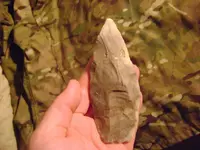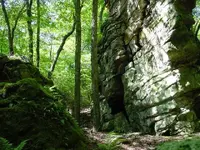Th3rty7
Silver Member
I found this piece in a rock shelter in wv on private land. I think it could be a possible paleo preform, because it's fairly thick, but has a 3 inch flute on one side. Material is highly patinated local flint. If you have any comments or ideas on possible type I'd love to hear them. I wish I had an insitu of this piece(didn't have the camera on me) the other pic is some of the limestone outcroppings and formations in front of the shelter. There is a couple of petroglyphes in the area as well.
Attachments
Upvote
0



